Direct simulation of different geometric representations
Numerical analyses of models of different representation formats without previous conversion into analysis suitable models
Setting
The transition process from a CAD model to a simulation model for a classical finite element analysis (i.e. a mesh) can consume up to 80% of the engineering effort. Typically, it involves serveral steps:
- First the model needs to be prepared to be meshable. I.e. all modeling flaws, such as gaps, intersections, multiple entities, etc. need to be healed. This step is only partially automatable, as some flaws allow a variatey of interpretation of the exact, desired shape.
- The model is meshed. This process is fully automatable. However, it imposes strong requirements to the underlying model (see step 1).
- The resulting mesh typically needs to be adjusted such that the mesh quality is sufficient for the subsequent FEM analysis.
To circumevent this costly conversion process, several methods were developed, which perform a simulation directly on the original geometry. The most prominent example is the Isogoemetric Analysis (IGA), which uses the same shape functions for the geometric representation and the simulation. Consequently, meshing and mesh healing can be omitted. The geometry, however, still needs to be valid.

Finite Cell Method
The Finite Cell Method (FCM) is a high-order ficitious domain method. The complex geometry is embedded into a simple domain that can be meshed easily in a regular grid.

The numerical integration of the weak formulation is extended to the whole domain. Integration points are then weighted, respectively to their location inside or outside of the pyhiscal domain. Hence, the complexity of the geometry is resolved on the integration level, which poses far less strict requirements on the model. It is in fact sufficient to provide a reliable point membership classification.
Constructive Solid Geometries
Constructive Solid Geometries (CSG) CAD models are constructed from a set of primitives such as spheres, cuboids, cylinders, etc., which are combined with the Boolean operations: union, intersection and difference.
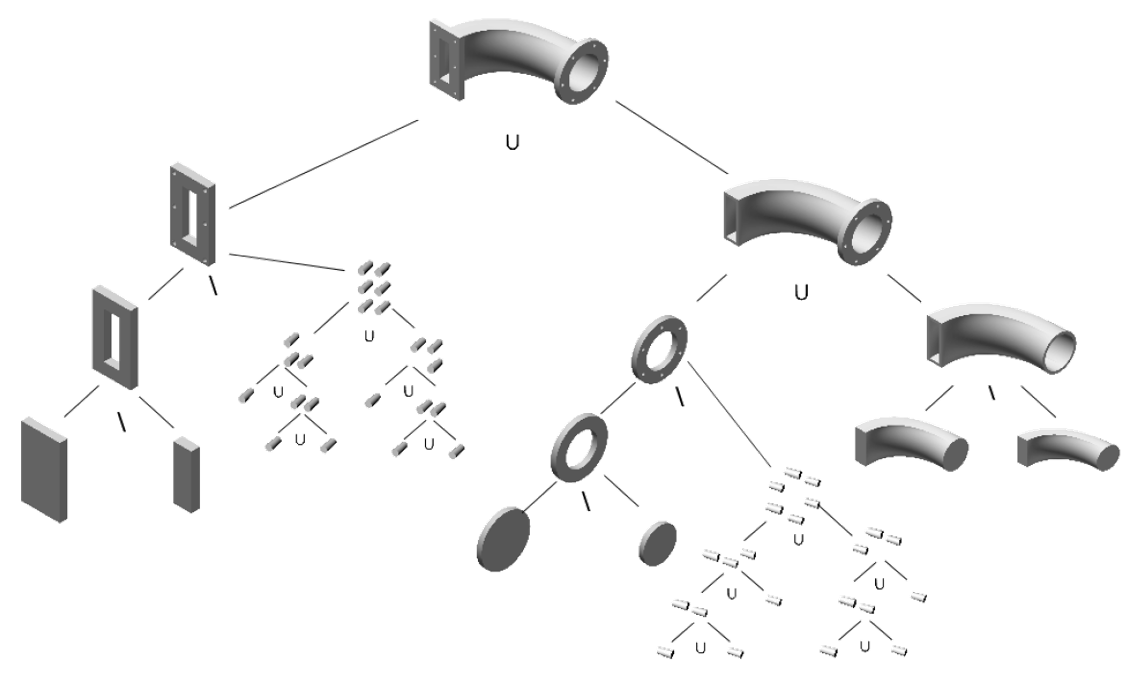
The point membership classification for the FCM can be carried out easily on a CSG tree of simple primitives and was extended to obtain point membership information also from more elaborate primitives, such as sweeps, lofts, etc.
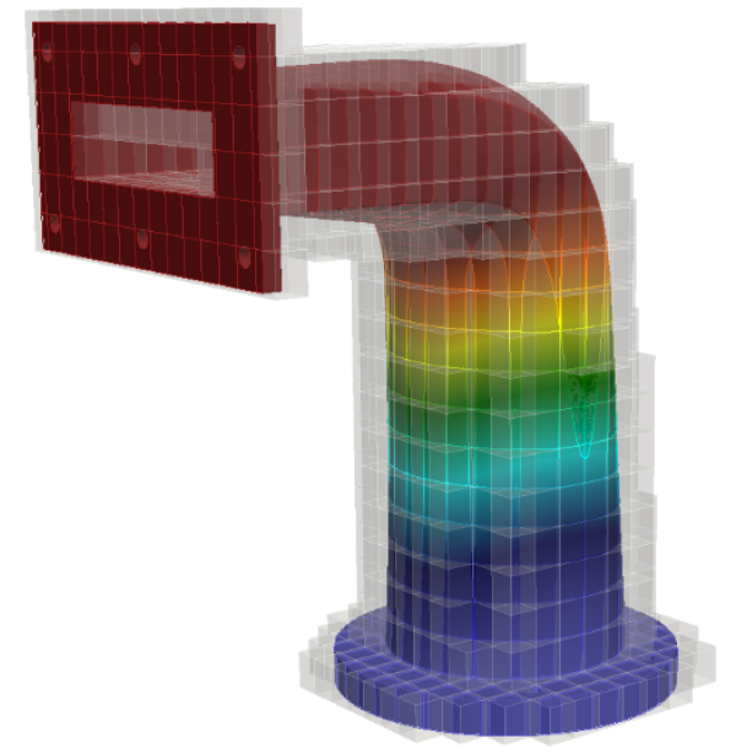
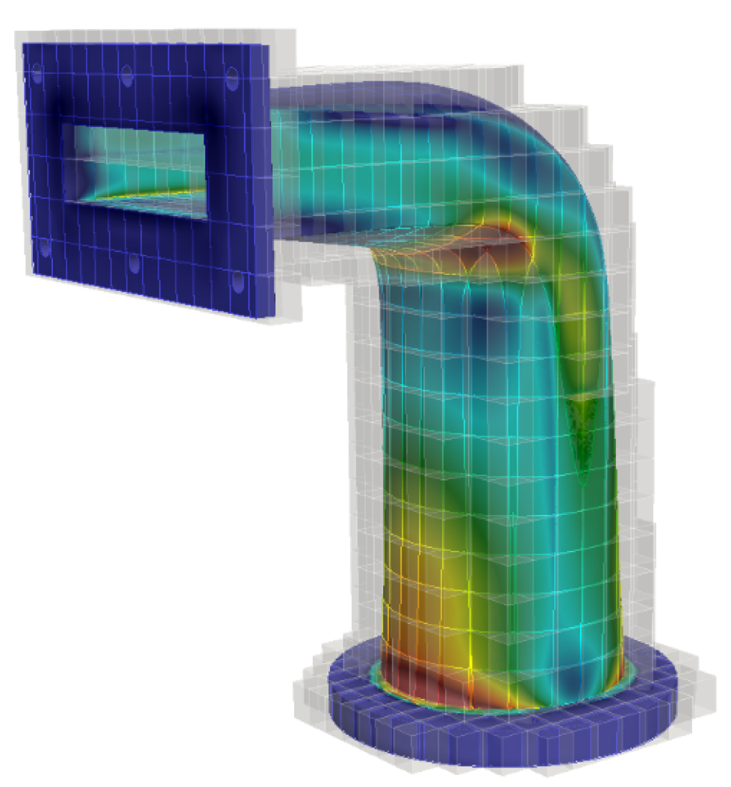
Flawed Boundary Representation Models
B-Rep models are prone to geometrical and topological errors, such as gaps, intersections, missing or double entities, etc. These flaws can destroy a numerical simulation and thus would typically require geometry healing. However, a method, based on Octree reconstruction and the Floodfill algorithm was developed which allows a direct use of flawed geometries in computer aided engineering. To this end, the model is resolved by an octree, whose smallest leaf cells are larger than the characteristric size of the largest gap. Hence, a subsequently applies floodfill algorithm can mark all octree cells as inside and outside.
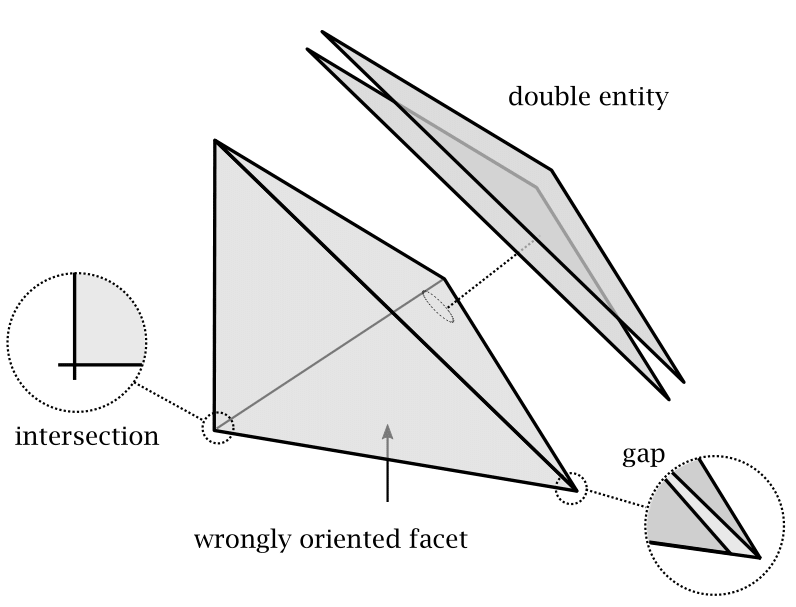
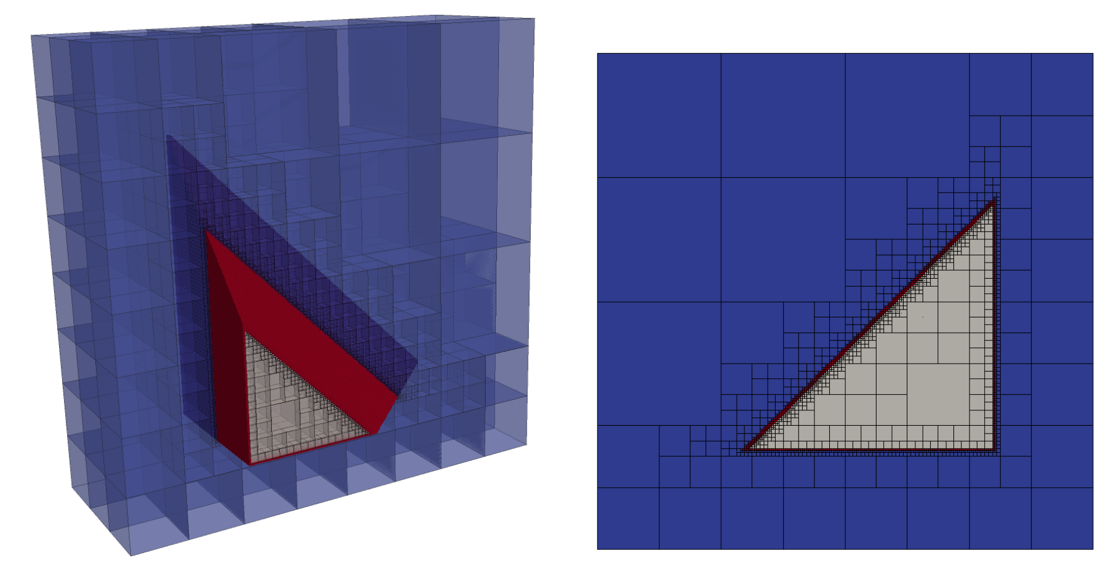
To improve the accuracy, serveral additional ray-casting test are carried out for the integration points on the leaf cells. The domain membership is then evaluated by a 'vote for the majority'.
